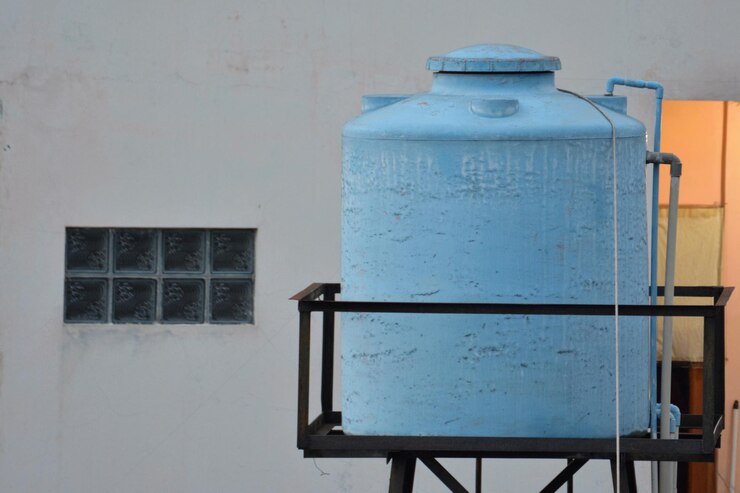
Water storage tanks play a crucial role in a wide range of industries, including agriculture, mining, and manufacturing, ensuring a consistent and reliable water supply. With such a vital responsibility for resource management, the efficiency, longevity, and reliability of water storage tanks are of paramount importance. One key factor that significantly affects these aspects is the installation of tank liners.
Tank liners serve as protective barriers, preserving water quality and preventing leaks, which could lead to wasted resources and environmental damage. Moreover, they play a crucial role in extending the lifespan of the storage tanks themselves by preventing corrosion and other forms of wear and tear. In this comprehensive blog, we will delve into the many benefits of installing tank liners in water storage tanks, highlighting the roles they play in maintaining water quality, ensuring cost-effectiveness, and reducing environmental impact.
The Role of Liners in Preserving Water Quality
One of the primary reasons for installing a liner in a water storage tank is to protect the water quality. An effective tank liner acts as an impermeable barrier that prevents contaminants from seeping into the water from the tank materials or through cracks and seams. Moreover, tank liners help to prevent the growth of harmful algae and bacteria, ensuring the water remains safe and fit for its intended use. By maintaining a clean and hygienic environment within the tank, liners contribute significantly to the overall quality and safety of stored water.
Extending the Lifespan of Your Water Storage Tanks
Aside from preserving water quality, tank liners also play a vital role in extending the lifespan of water storage tanks. They help protect the tank materials, particularly metal surfaces, from corrosion and other forms of wear and tear. By preventing leaks and mitigating the risk of structural damage, tank liners can significantly reduce the need for costly repairs or even tank replacement. As a result, installing a liner in your water storage tank is an investment that can yield long-term financial benefits by prolonging the service life of your storage facility.
Types of Tank Liners and Their Applications
There are various types of tank liners available in the market, each with its own set of benefits, applications, and suitability for different water storage requirements. Some common types of tank liners include:
1. Polyvinyl Chloride (PVC) Liners: PVC liners are one of the most popular choices for water storage tanks. They offer excellent flexibility and resistance to chemical reactions, making them suitable for a wide range of storage applications.
2. Ethylene Propylene Diene Monomer (EPDM) Liners: EPDM liners are renowned for their exceptional durability and resistance to UV radiation, temperature fluctuations, and chemical degradation. These liners are ideal for outdoor water storage, such as for irrigation or mining applications.
3. Reinforced Polyethylene (RPE) Liners: RPE liners are made from high-strength polyethylene fabric, providing enhanced puncture and tear resistance. They are well-suited for heavily used industrial or agricultural water storage tanks.
Understanding the specific needs and requirements of your water storage application is essential for selecting the most suitable liner material. A professional tank liner provider can help you navigate the available options and make an informed decision based on your unique situation.
The Installation Process: Ensuring Optimal Performance
Proper installation of your tank liner is critical in ensuring its longevity and performance. The installation process generally involves the following steps:
1. Tank Preparation: This includes cleaning and inspecting the tank for any damage or debris, repairing any detected issues, and ensuring a smooth surface for the liner installation.
2. Liner Placement: The chosen liner is carefully custom-fabricated to match your tank’s dimensions and is then meticulously installed so that it fits snugly against the tank walls, floor, and roof.
3. Sealing and Securement: Seams and joints of the liner are expertly heat-sealed or welded to establish a watertight barrier, and the liner is securely anchored to the tank structure to prevent shifting or displacement during use.
A professional tank liner provider ensures that the installation process is carried out with precision and care, guaranteeing the optimal performance of your tank liner and providing you with peace-of-mind for the long term.
Conclusion
Installing tank liners in your water storage tanks offers numerous benefits, including preserving water quality, extending the lifespan of your storage facilities, and improving overall efficiency. By understanding the various types of liners available and working with an experienced provider, you can make informed decisions that meet your unique storage needs.
ATM Tanks not only provides expert guidance and a wide range of high-quality liner products, but they also offer professional installation, maintenance, and repair services, ensuring that your water storage solution remains effective and reliable for years to come. Trusting us as your partner in water storage tank liners means investing in the longevity, safety, and sustainability of your water management system.
- Choosing the Best Tank Liners for Longevity - December 7, 2025
- Pro Solutions for Effective Industrial Tank Cleaning - December 7, 2025
- What to Do When Your Tank’s Waterproofing Fails - December 7, 2025






